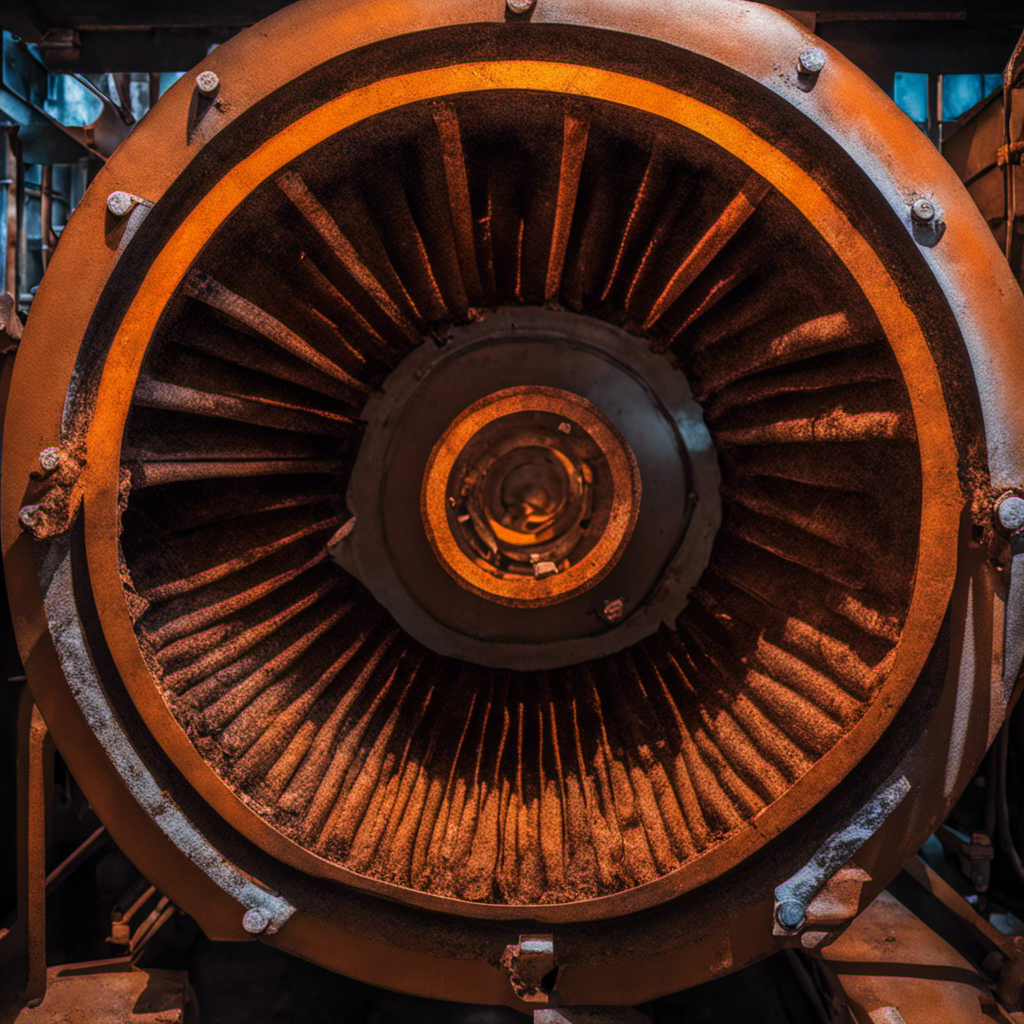What Fails First on a Furnace
In this article, we will explore the common components of a furnace and identify which ones tend to fail first. By understanding the potential weak points, homeowners and service professionals can better anticipate and address issues, ensuring the continued comfort and safety of those they serve.
From igniters and blower motors to heat exchangers and control boards, our goal is to provide practical insights that enable proactive maintenance and timely repairs, ultimately enhancing the longevity and efficiency of your furnace.
Key Takeaways
- Faulty igniters can prevent the furnace from producing heat.
- Blower motors are critical for circulating warm air throughout the home.
- Heat exchangers transfer heat from the combustion chamber to the surrounding air.
- Control boards regulate and coordinate the functions of a furnace.
Igniters
One common issue that homeowners may encounter with their furnace is a faulty igniter. Igniters are responsible for lighting the fuel in the furnace, which allows for the production of heat. However, over time, igniters can experience problems that prevent them from functioning properly.
Common igniter problems include wear and tear, improper positioning, or a buildup of dirt and debris. When troubleshooting igniter failures, homeowners should first check for any visible signs of damage, such as cracks or breaks. They should also ensure that the igniter is properly aligned and clean.
If these steps do not resolve the issue, it may be necessary to replace the igniter entirely. Regular maintenance and cleaning can help prevent igniter problems and ensure the efficient operation of the furnace.
Blower Motors
When it comes to the reliability of a furnace, blower motors are often one of the first components to experience issues. Blower motors play a critical role in circulating the warm air throughout a home or building. Motor failure can result in reduced airflow, inefficient heating, or even complete system shutdown.
Troubleshooting techniques can help identify the root cause of motor failure. Common issues include worn-out bearings, faulty wiring, or a malfunctioning capacitor. Regular maintenance, such as cleaning and lubricating the motor, can prevent premature failure. Additionally, ensuring proper air filter maintenance and addressing any airflow restrictions can help prolong the lifespan of the blower motor.
Heat Exchangers
While often overlooked, heat exchangers are a critical component of a furnace’s operation and can be susceptible to failure over time. Heat exchangers play a vital role in transferring heat from the combustion chamber to the surrounding air, ensuring that your home stays warm and comfortable.
However, they can develop condensation issues, leading to corrosion and cracks. Regular maintenance is key to preventing heat exchanger problems. It is important to schedule annual inspections by a qualified HVAC technician who can check for any signs of damage, such as rust or cracks, and address them promptly.
Additionally, keeping the furnace filters clean and ensuring proper airflow can help prevent condensation buildup. By taking these maintenance tips into consideration, you can extend the life of your heat exchanger and ensure the efficient operation of your furnace.
Control Boards
Control boards are responsible for regulating and coordinating the various functions and components of a furnace, ensuring efficient and effective operation. However, like any other component, control boards can experience issues over time.
Some common issues with control boards include failure to start the furnace, incorrect temperature readings, and erratic behavior. To troubleshoot these problems, it is essential to check the power supply, inspect the wiring connections, and reset the control board if necessary.
It is also crucial to ensure that the control board is not obstructed by dust or debris, as this can affect its performance. If troubleshooting techniques do not resolve the issues, it may be necessary to replace the control board to restore the furnace’s proper functioning.
Flame Sensors
Flame sensors play a critical role in detecting and verifying the presence of a flame in a furnace, ensuring safe and efficient operation. These sensors are essential for the proper functioning of the furnace and should be regularly maintained and checked.
Common issues with flame sensors include build-up of dirt and debris, which can obstruct the sensor’s ability to accurately detect the flame. Additionally, corrosion or damage to the sensor can cause it to malfunction.
To troubleshoot flame sensor issues, start by cleaning the sensor using a soft brush or cloth. Ensure that the sensor is positioned correctly and securely in the furnace. If cleaning the sensor does not resolve the issue, it may be necessary to replace the sensor entirely.
Regular maintenance and inspection of flame sensors can help prevent problems and ensure the safe and efficient operation of the furnace.
Frequently Asked Questions
How Often Should Igniters Be Replaced in a Furnace?
The frequency of igniter replacement in a furnace depends on various factors, such as usage and maintenance. Troubleshooting faulty igniters involves inspecting for wear and tear, checking for proper electrical connections, and consulting a professional if necessary.
Can a Faulty Blower Motor Cause Other Components in the Furnace to Fail?
A faulty blower motor can potentially cause other components in a furnace to fail. It is important to address common blower motor issues promptly to prevent further damage and ensure the longevity of igniters and other furnace components.
What Are Some Signs That Indicate a Cracked Heat Exchanger in a Furnace?
Warning signs of a cracked heat exchanger in a furnace include soot or scorched areas around the furnace, strange odors, a yellow or flickering flame, and elevated levels of carbon monoxide. It is crucial to address this issue promptly due to safety concerns.
Do Control Boards in Furnaces Have Any Built-In Safety Features?
Safety features in furnace control boards include high limit switches and flame sensors. Common causes of control board failure include power surges, faulty wiring, and overheating. Regular maintenance and inspections can help identify and prevent potential issues.
How Can One Determine if a Flame Sensor Is Malfunctioning in a Furnace?
To determine if a flame sensor is malfunctioning in a furnace, conduct flame sensor troubleshooting. Common causes of furnace ignition failure include a dirty or corroded flame sensor, improper positioning, or a faulty sensor.


